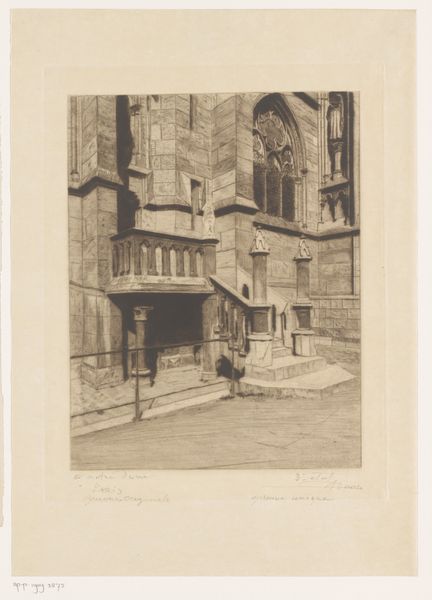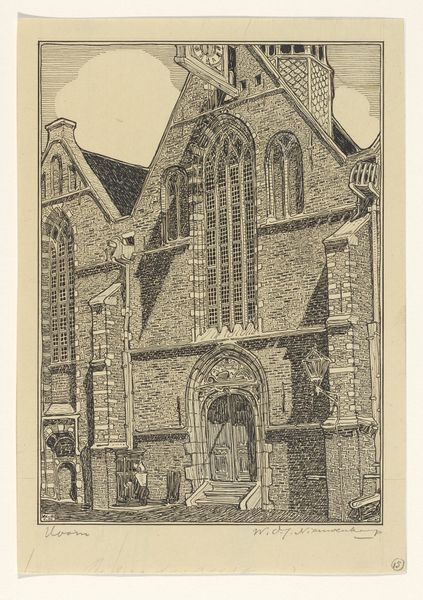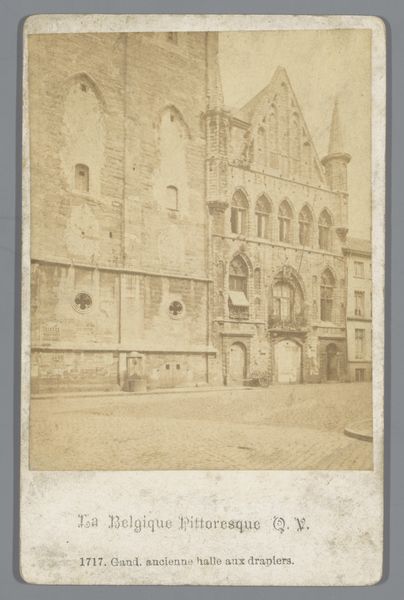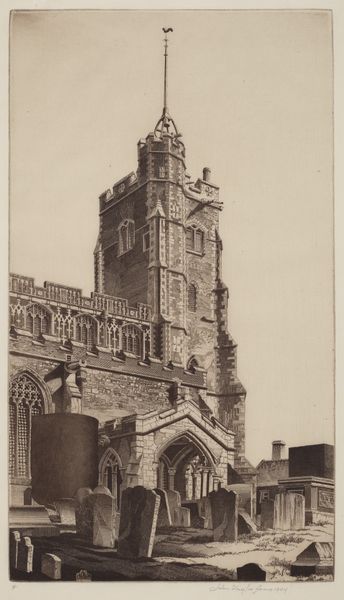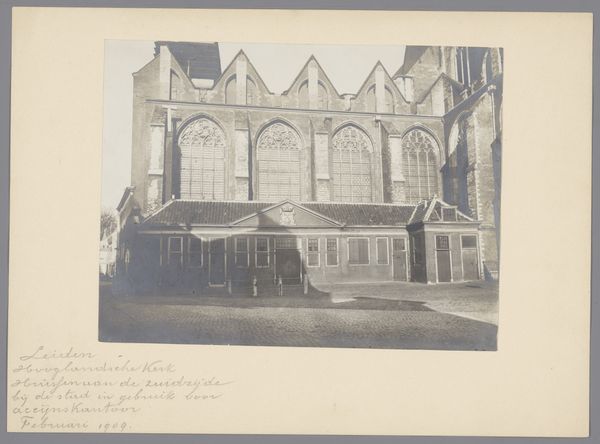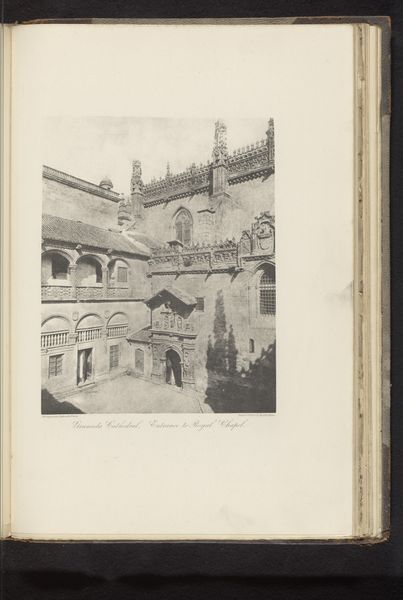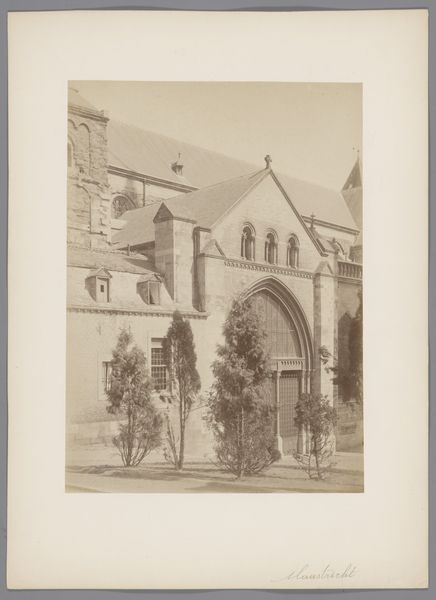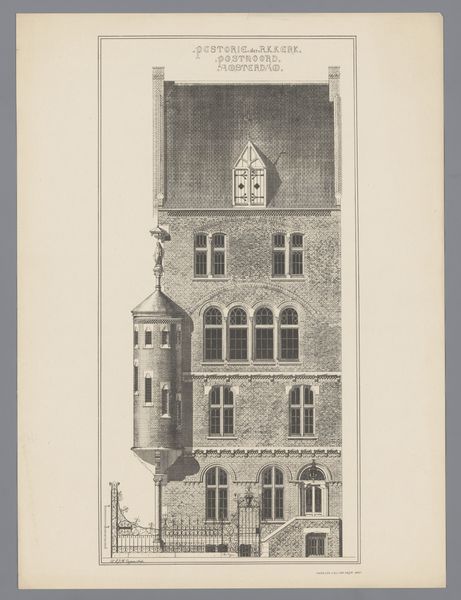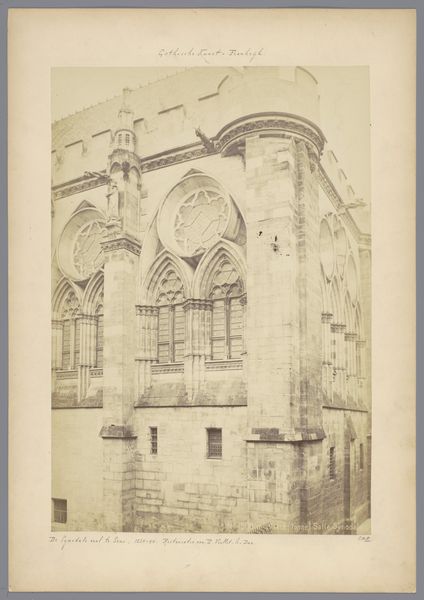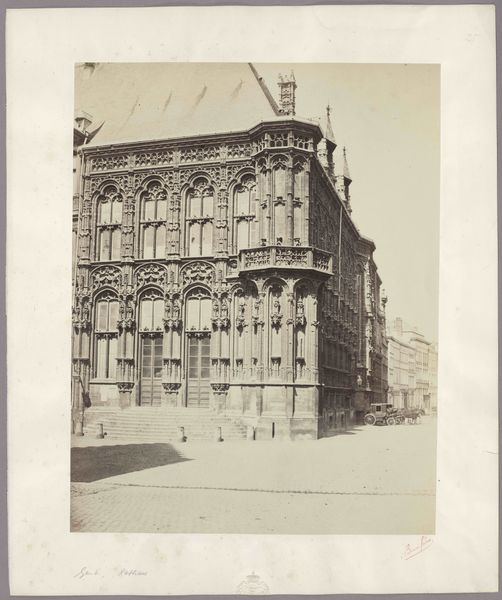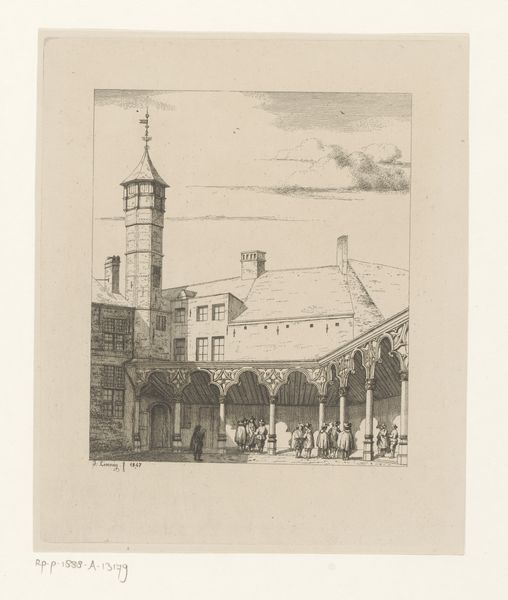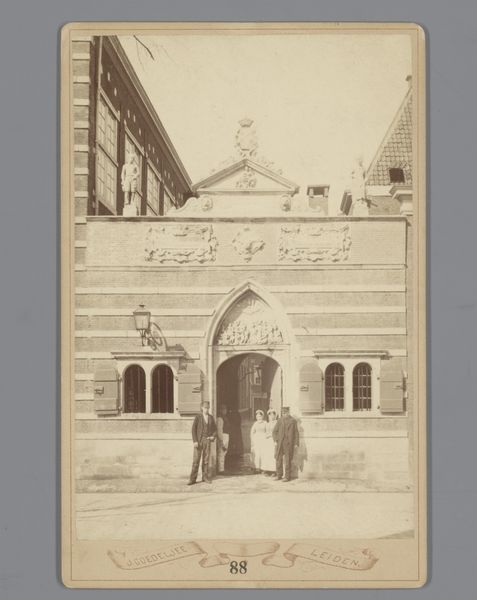
Dimensions: height 307 mm, width 239 mm
Copyright: Rijks Museum: Open Domain
Curator: Let's turn our attention to this understated print by Auguste Danse, titled "Trap aan de gevel van de Notre-Dame in Parijs," or "Staircase on the Facade of Notre-Dame in Paris" made around 1895. Editor: My first impression? A touch gloomy, like a rainy Tuesday morning in a forgotten corner of Paris. It also gives me this sense of monumental scale crammed into something quite intimate. Curator: Indeed, the etching captures a unique perspective of the cathedral. We see a close-up view of a section of the facade with the titular staircase. Now, the late 19th century witnessed significant social and political change. How might the architecture of a famous and potent building, like the Notre Dame, be perceived at the time? Editor: Oh, it was complicated! On one hand, these monumental structures represented the stability of tradition. But the artist could've also chosen to highlight decay, obsolescence. But the interesting thing is, I can see so many subtle little variations in the linework - each brick and stone alive in its own way. It feels like looking through a magnifying glass at the face of time itself. Curator: Precisely, Notre-Dame stands as a focal point for architectural debate in 19th-century France. While under scrutiny, it still functioned as an important cultural emblem, one to which a growing bourgeois public increasingly felt they possessed the right to belong. Editor: But you know, even without knowing any of that, you still get a visceral feeling. A feeling of timelessness, endurance...almost like it knows a secret. You could get totally lost in this image... Curator: Which in part could explain its creation and function within this cultural context. I appreciate how you identified that effect of intimacy too. I wonder, what contemporary consumers would make of this tension and architectural scale now. Editor: Yeah, a moody love letter to a legend... A quiet defiance. And you’ve armed me with knowledge! It’s interesting now to revisit this little gem as it connects and breaks away from these historical tides. Thank you. Curator: A worthwhile exploration, and a great way to understand Danse's place among those who looked to the architectural marvel of the city for both intimate and imposing inspiration.
Comments
No comments
Be the first to comment and join the conversation on the ultimate creative platform.
